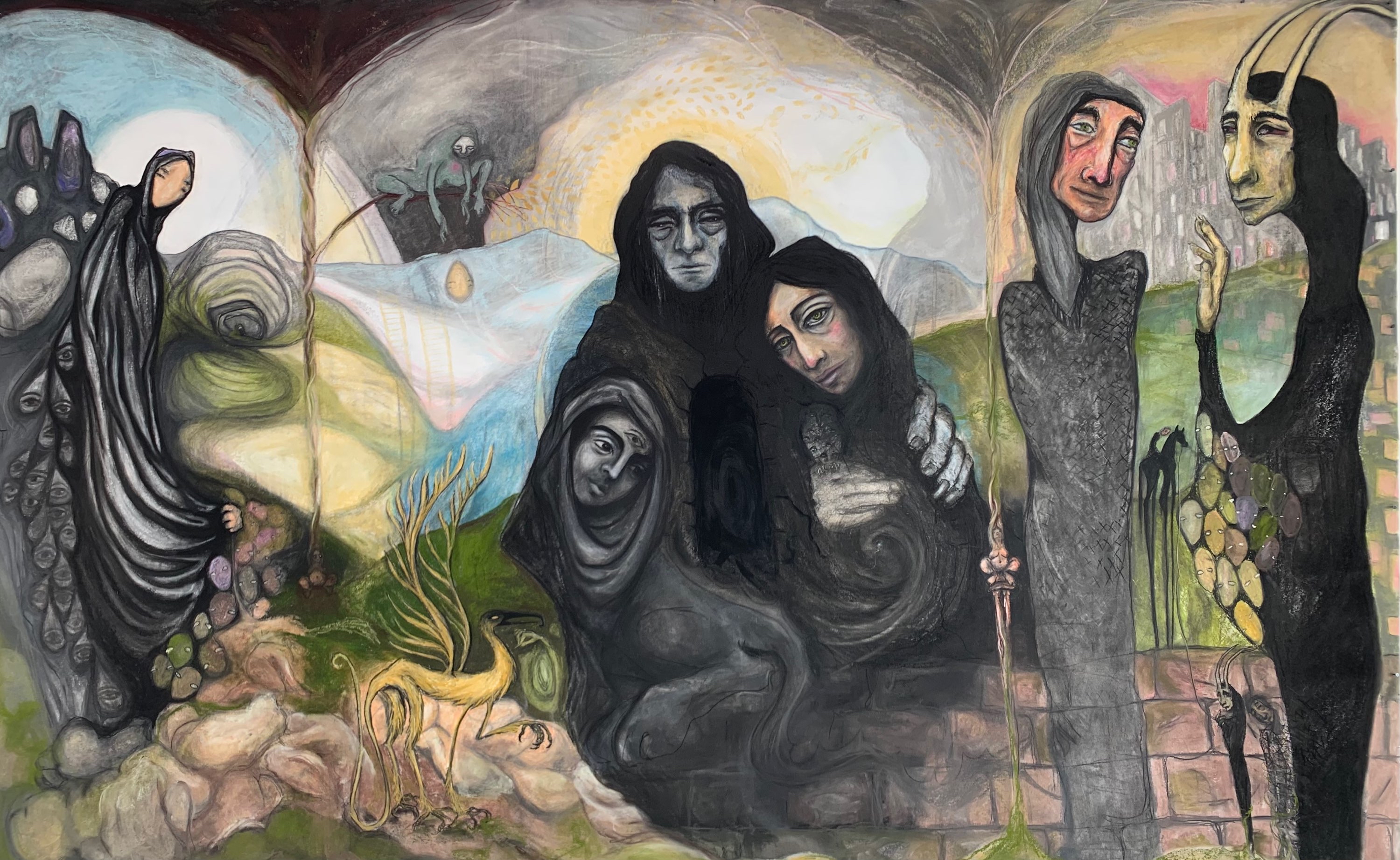Angels of the Apocalypse
- Susan Pearson
- May 9
- 3 min read
I created two large scale drawings for my degree show. I was working on Angels of the Apocalypse, at the same time as The Hermit, the Fates, the Warrior and the Fool, both shown below. The narratives merged, changed, and evolved as I created them. I imagine and hope that viewers will give their own stories to the characters.


The strong connections I feel between art, mythology, and philosophy link back to my dissertation research and Giles Deleuze, specifically his concept of the Rhizome. I imagine rhizomatic roots connecting my work and my influences. For example, research into mythological and religious symbolism led me onto medieval manuscript marginalia. From there, I journeyed towards ideas of the marginal. I found the characters and stories in the margins interesting and worth emphasising, maybe they were the most interesting. I thought of the marginal people in society. People that are at best often misunderstood and at worst, demonised. I began to wonder if they could be represented as angels instead of demons, which made me think of the beginning of the apocalypse, and the often-problematic portrayal of femininity. I researched imagery and stories from various apocalypse myths whilst thinking of present day post-apocalyptic films and television. I read a quote online, "dystopian fiction is when you take things that happen to marginalised populations and apply them to people with privilege."
I was also inspired by Gustave Moreau's symbolist paintings, by the chalky drawing and painting style alongside the detailed drawing... and the subject matter... and the symbolism. First image above is Tattooed Salome, begun 1874 but never completed. Salome is portrayed in mythology as the femme fatale that lures men to their death and she was a popular subject for the symbolist painter. Also shown above is La Bonne Fée - The Good Fairy, (1826-1898). I stumbled upon this painting whilst searching for Paula Rego's Blue Fairy Whispers to Pinocchio.
Moreau often portrayed the struggle between 'spirit' and 'matter'.
Gundestrup Cauldron
While researching various myths and folklore, it struck me how much they were an integral part of folks day to day life, culture and identity. There are often strong connections between different cultures and mythologies.The imagery from a gilded silver bowl found in Gundestrup in Denmark in 1891 CE, show a "clear Celtic influence but some motifs, particularly the exotic animals (lions or leopards, elephants, and griffins), suggest, too, a Near Eastern influence [...] The cauldron 'is not Celtic, or, at least, not just Celtic'. As such, it is an object that continues to intrigue all who see it."
The Gundestrup Cauldron was likely made in the Balkans, perhaps in the 1st century BCE, and shows a clear influence from Celtic art and mythology, even if other motifs seem to be Near Eastern. The relief panels on the cauldron show scenes of gods, animals, warriors, and sacrificial rituals, many of which continue to perplex historians as to their precise significance. The cauldron is one of the great examples of ancient European art and is now part of the collection of the National Museum of Denmark, Copenhagen.

"One scene shows what appears to be a dead bull, above which is a female figure brandishing a sword. Presumably, then, this is a representation of a ritual sacrifice or hunt. Bulls were powerful totems in Celtic culture and one of the animals sacrificed to the gods. The scene also has three other animals amidst foliage; they are perhaps a lizard and two hunting dogs."
Cauldrons in Celtic Culture

"The cauldron was an integral part of ancient Celtic feasts and had its own special place in mythology where it was given magical properties and associated with abundance, regeneration, and fertility. The warrior-god the Dagda had the most famous cauldron in the Celtic world, and it was regarded as one of the four treasures of the Tuatha Dé Danann, the pre-Christian Irish gods or supernatural race known as the Tuatha Dé Danann who brought elements of civilization in the Irish Mythological Cycle. The Dagda’s cauldron was special because it was inexhaustible and could feed any number of his followers."














Comments